Brother Cadfael is the main fictional character in a series of historical murder mysteries written between 1977 and 1994 by the linguist-scholar Edith Pargeter under the name Ellis Peters. The character of Cadfael himself is a Welsh Benedictine monk living at the Abbey Church of Saint Peter and Saint Paul, in Shrewsbury, western England, in the first half of the 12th century. The stories are set between about 1135 and about 1145, during "The Anarchy", the destructive contest for the crown of England between King Stephen and his cousin Empress Maud.

The Abbey Church of the Holy Cross is an ancient foundation in Shrewsbury, the county town of Shropshire, England.

Saint Winifred was a Welsh virgin martyr of the 7th century. Her story was celebrated as early as the 8th century, but became popular in England in the 12th, when her hagiography was first written down.
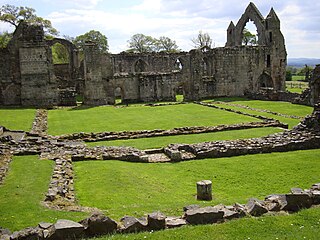
Haughmond Abbey is a ruined, medieval, Augustinian monastery a few miles from Shrewsbury, England. It was probably founded in the early 12th century and was closely associated with the FitzAlan family, who became Earls of Arundel, and some of their wealthier vassals and allies. It was a substantial, successful and wealthy house for most of its four centuries, although evidence of abuses appeared before its dissolution in 1539. The buildings fell into disrepair and the church was largely destroyed, although the remains of some of the domestic buildings remain impressive. The site is now in the care of English Heritage and is open to the public throughout the year and free entry.
Robert of Shrewsbury was an English cleric, administrator, and judge of the Angevin period. His career culminated in his appointment as Bishop of Bangor.
Richard de Belmeis I was a medieval cleric, administrator, judge and politician. Beginning as a minor landowner and steward in Shropshire, he became Henry I's chief agent in the Welsh Marches and in 1108 was appointed Bishop of London. He founded St Osyth's Priory in Essex and was succeeded by a considerable dynasty of clerical politicians and landowners.
Richard de Belmeis was a medieval cleric, administrator and politician. His career culminated in election as Bishop of London in 1152. He was one of the founders of Lilleshall Abbey in Shropshire.
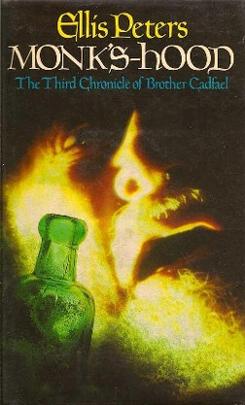
Monk's-Hood is a medieval mystery novel by Ellis Peters, set in December 1138. It is the third novel in The Cadfael Chronicles. It was first published in 1980.

The Virgin in the Ice is a medieval mystery novel by Ellis Peters, set in late 1139. It is the sixth novel in The Cadfael Chronicles, first published in 1982.

A Morbid Taste for Bones is a medieval mystery novel by Ellis Peters set in May 1137. It is the first novel in The Cadfael Chronicles, first published in 1977.
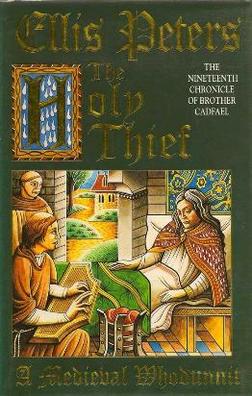
The Holy Thief is a medieval mystery novel by Ellis Peters set in 1144–1145. It is the 19th and penultimate volume of the Cadfael Chronicles, first published in 1992.
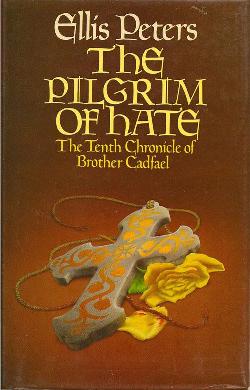
The Pilgrim of Hate is a medieval mystery novel by Ellis Peters, set in spring 1141. It is the tenth in the Cadfael Chronicles, and was first published in 1984.

Lilleshall Abbey was an Augustinian abbey in Shropshire, England, today located 6 miles (9.7 km) north of Telford. It was founded between 1145 and 1148 and followed the austere customs and observance of the Abbey of Arrouaise in northern France. It suffered from chronic financial difficulties and narrowly escaped the Dissolution of the Lesser Monasteries in 1536, before going into voluntary dissolution in 1538.
The Cadfael Chronicles is a series of historical murder mysteries written by the linguist-scholar Edith Pargeter (1913–1995) under the name Ellis Peters. Set in the 12th century in England during the Anarchy, the novels focus on a Welsh Benedictine monk, Cadfael, who aids the law by investigating and solving murders.
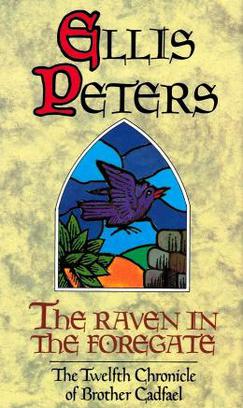
The Raven in the Foregate is a medieval mystery novel by Ellis Peters, fourth of the novels set in 1141, a year of great political tumult in the Anarchy. It is 12th of The Cadfael Chronicles, and first published in 1986.
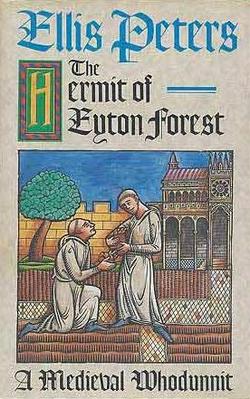
The Hermit of Eyton Forest is a medieval mystery novel by Ellis Peters, set in the autumn of 1142. It is the 14th novel in the Cadfael Chronicles and was first published in 1987.
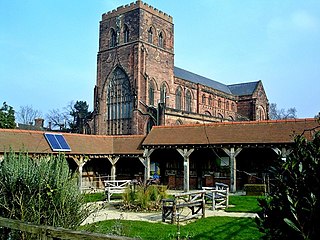
Thomas Prestbury was an English medieval Benedictine abbot and university Chancellor.

The recorded abbots of Shrewsbury run from c 1087, four years after Shrewsbury Abbey's foundation, to 1540, its dissolution under Thomas Cromwell. The abbey was large and well-endowed and the abbots were often important political figures as well as ecclesiastical leaders. They varied greatly over the centuries in ethnic and social origins, intellectual attainments and holiness of life. The first two, Fulchred and Godfred, were imported from Normandy. The remainder seem to have been born in Britain and most, but not all, were elected, or at least selected, from the chapter of the abbey. As important territorial magnates, the abbots were always called to take part in the sessions of Parliament from its very beginnings as an institution in 1265. As important figures in the Western Catholic Church, abbots were permitted by the Pope to wear the pontifical ring from 1251 and the mitre from 1397.
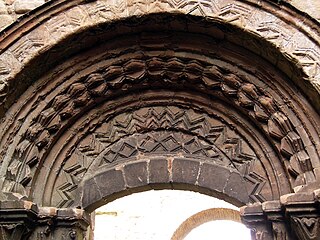
John Mirk was an Augustinian Canon Regular, active in the late 14th and early 15th centuries in Shropshire. He is noted as the author of widely copied, and later printed, books intended to aid parish priests and other clergy in their work. The most famous of these, his Book of Festivals or Festial was probably the most frequently printed English book before the Reformation.

Morville Priory was a small Benedictine monastery in Shropshire, England, a cell of Shrewsbury Abbey.


















